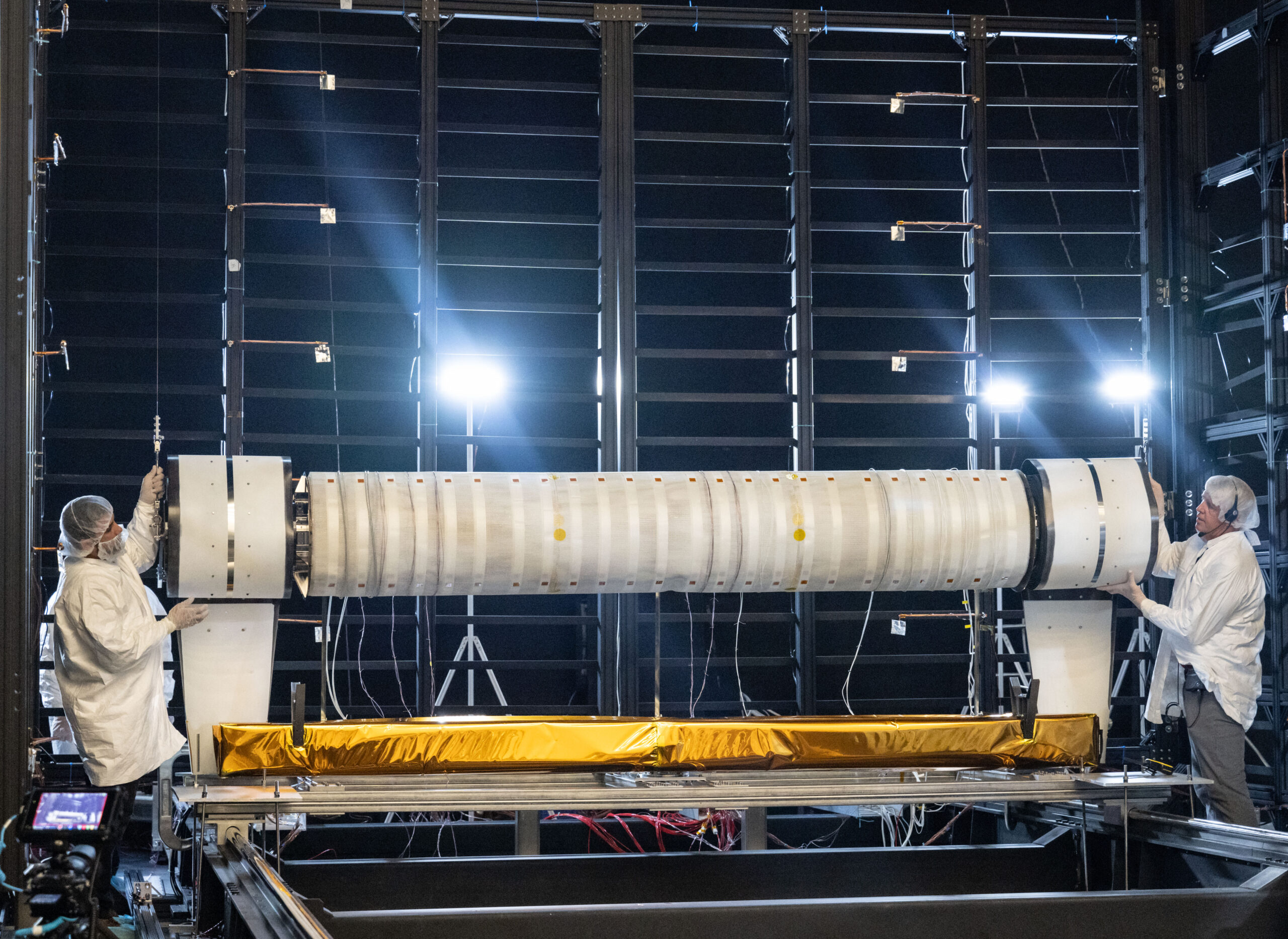Imagine a groundbreaking technological innovation that enables equipment to operate on the Moon for up to ten years, continuously supplying energy. This is precisely what NASA is striving to achieve through its collaboration with three pioneering companies, aiming to deliver a consistent power source at the Moon’s South Pole to support the Artemis missions.
In 2022, NASA awarded contracts to three companies, tasking them with developing self-sustaining solar array systems. These systems are set to undergo comprehensive testing at the Johnson Space Center’s Space Environment Simulation Laboratory (SESL) in Houston, specifically within Chamber A located in building 32. The prototypes have been meticulously evaluated to ensure they can endure the Moon’s harsh environment and effectively deploy solar arrays on its surface.
By the summer of 2024, Honeybee Robotics, a Blue Origin subsidiary based in Altadena, California, and Astrobotic Technology from Pittsburgh, Pennsylvania, will subject their solar array designs to tests within Chamber A. Each company has crafted a distinct solution geared towards withstanding the Moon’s severe conditions and significant temperature fluctuations. The data gathered in the SESL will help refine the requirements and designs, with the ultimate goal of deploying at least one of these systems near the Moon’s South Pole.
This initiative is part of NASA’s Vertical Solar Array Technology (VSAT) project, which aims to support the agency’s long-term lunar surface operations. The VSAT project is under the Space Technology Mission Directorate’s Game Changing Development program, led by the Langley Research Center in Hampton, Virginia, in collaboration with the Glenn Research Center in Cleveland.
Jim Burgess, the lead systems engineer for VSAT, remarked, “We envision the Moon becoming a hub for manufacturing satellites and hardware, utilizing the energy required to launch from the lunar surface.” This vision holds the potential to revolutionize space exploration and industry.
Originally built in 1965, the SESL supported the Gemini and Apollo programs and has since been adapted to conduct testing for other missions, such as the Space Shuttle Program and Mars rovers. It also played a crucial role in validating the design of the James Webb Space Telescope. Today, the SESL continues to evolve, supporting future Artemis explorations.
The Johnson Space Center’s ‘Front Door’ initiative is designed to tackle the challenges of space exploration by engaging with the public and fostering innovative ideas for exploring new destinations. Molly Bannon, Johnson’s Innovation and Strategy Specialist, said, “The SESL is just one of the hundreds of unique capabilities that we have here at Johnson. The Front Door provides a clear understanding of all our capabilities and services, how our partners can access them, and how to contact us. We know that we can go further together with all our partners across the entire space ecosystem if we bring everyone together as the hub of human spaceflight.”
Chamber A is one of the largest thermal vacuum chambers of its kind, offering the unique ability to simulate extreme deep-space temperature conditions as low as 20 Kelvin. This capability allows engineers to gather vital data on how technologies will react to the Moon’s severe conditions, particularly during the frigid lunar night when systems must survive for up to 96 hours in complete darkness.
Chuck Taylor, VSAT project manager, emphasized the importance of these tests, stating, “Testing these prototypes will help ensure more safe and reliable space mission technologies. The goal is to create a self-sustaining system that can support lunar exploration and beyond, making our presence on the Moon not just feasible but sustainable.”
The power generation systems must be designed to autonomously manage outages and ensure survival on the lunar surface. These systems will need to communicate with lunar habitats and rovers, providing continuous power and recharging capabilities as required. They also need to be adaptable, deploying on a curved surface, extending up to 32 feet to reach sunlight, and retracting for potential relocation.
“Generating power on the Moon involves numerous lessons and constant learning,” Taylor noted. “While this might seem like a technical challenge, it’s an exciting frontier that combines known technologies with innovative solutions to navigate lunar conditions and build a dynamic and robust energy network on the Moon.”
For those interested in further exploring the capabilities and scientific endeavors enabled by the thermal testing conducted in Johnson’s Chamber A facility, a video is available that delves into the technical details and the exciting potential of this innovative work.
This endeavor presents an exciting chapter in space exploration. With the potential to transform the Moon into an energy hub, NASA and its partners are pushing the boundaries of what is possible, paving the way for future lunar missions and beyond. As the world watches, these advancements promise not only to enhance our understanding of the Moon but also to lay the groundwork for sustained human presence on its surface, unlocking new possibilities for space exploration and industry.
For more Information, Refer to this article.


































